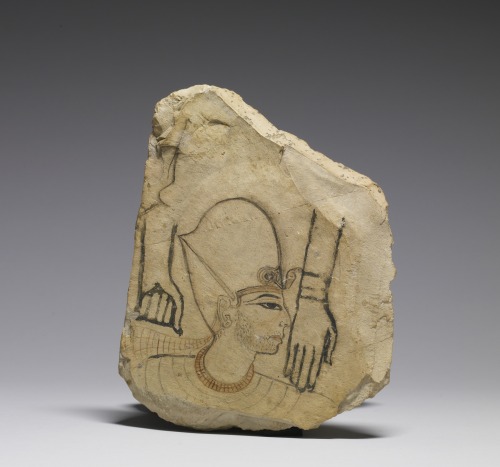#ostrakon

~ Ostrakon with the Greek alphabet.
Place of origin: Thebes, Egypt
Date: 30 B.C.-A.D. 641
Period: Roman Imperial period
Medium: Earthenware vessel fragment with Greek script.
Snippets in Stone
Here are two unusual stone fragments. The object at the top is an “ostrakon”, a piece of stone or pottery filled with text, in this case from Byzantine Egypt, dating from c. 600. While the fragment seems to be part of something that was initially much bigger (a sizable pot filled with a long biblical text, perhaps), it was actually always meant to be like this: a snippet with only a few words. The object was filled with text after it had become a fragment, as can be seen from the words written on its side. It is the equivalent of a page from a notebook. The second image, from 1280 BCE, has an even stronger draft connotation. This piece of stone was likely a teaching tool used by a master who showed his apprentice how to draw a face. The pupil subsequently tried out a pair of arms, which look clumsy - lots to learn here. Both items deceive us: they seem broken and insignificant, yet are complete and full of history.
Pic: (top) Metropolian Museum of Art, Accession nr. 14.1.103, dated c. 600 (more here); (bottom) Baltimore, Walters Art Museum, Accession nr. 32.1 (more here).
Post link


